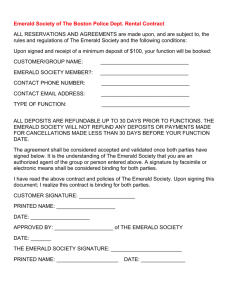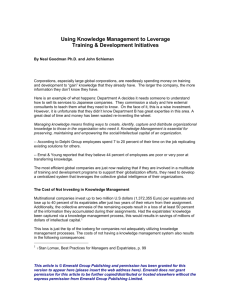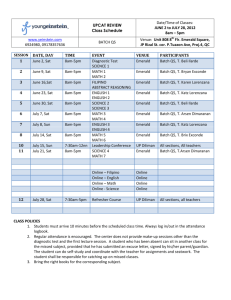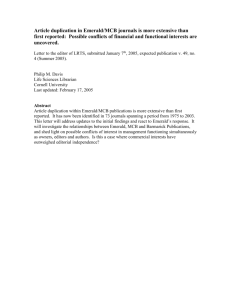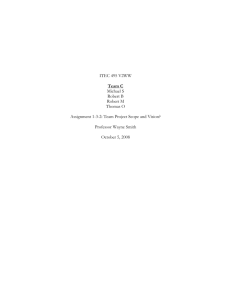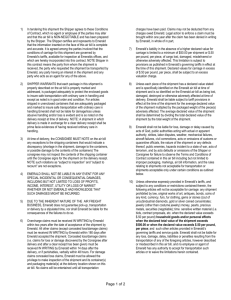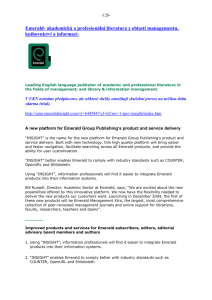Emerald Energy Program SOP
advertisement
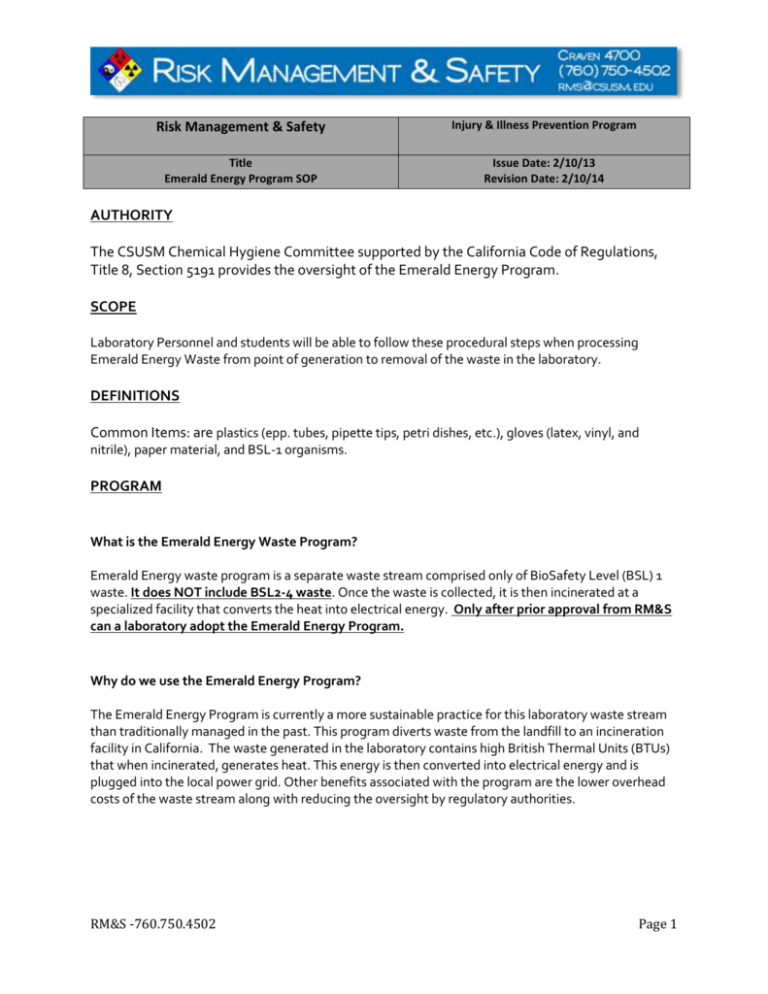
Risk Management & Safety Injury & Illness Prevention Program Title Emerald Energy Program SOP Issue Date: 2/10/13 Revision Date: 2/10/14 AUTHORITY The CSUSM Chemical Hygiene Committee supported by the California Code of Regulations, Title 8, Section 5191 provides the oversight of the Emerald Energy Program. SCOPE Laboratory Personnel and students will be able to follow these procedural steps when processing Emerald Energy Waste from point of generation to removal of the waste in the laboratory. DEFINITIONS Common Items: are plastics (epp. tubes, pipette tips, petri dishes, etc.), gloves (latex, vinyl, and nitrile), paper material, and BSL-1 organisms. PROGRAM What is the Emerald Energy Waste Program? Emerald Energy waste program is a separate waste stream comprised only of BioSafety Level (BSL) 1 waste. It does NOT include BSL2-4 waste. Once the waste is collected, it is then incinerated at a specialized facility that converts the heat into electrical energy. Only after prior approval from RM&S can a laboratory adopt the Emerald Energy Program. Why do we use the Emerald Energy Program? The Emerald Energy Program is currently a more sustainable practice for this laboratory waste stream than traditionally managed in the past. This program diverts waste from the landfill to an incineration facility in California. The waste generated in the laboratory contains high British Thermal Units (BTUs) that when incinerated, generates heat. This energy is then converted into electrical energy and is plugged into the local power grid. Other benefits associated with the program are the lower overhead costs of the waste stream along with reducing the oversight by regulatory authorities. RM&S -760.750.4502 Page 1 PROCEDURE ONLY BSL-1 laboratories can implement the Emerald Energy Program. 1. Generated waste that can be placed in the Emerald Energy bins are plastics, paper, latex, and nitrile based materials. For example, media plates, plastic test tubes, pipette tips, gloves, pads, and paper towels. a. NO GLASS, LIQUIDS or CONTAINERS with POURABLE LIQUIDS, CONTAMINATED BSL2-4 ITEMS, METAL, or SHARPS shall be placed in the bin. 2. The laboratory must obtain the following: a. A red hands free trash bin must be used. b. On the top of the lid, an Emerald Energy Sticker must be placed along with a sign that says “No Liquid or Glass” with a visual picture of a glass container with liquid inside of it crossed out. c. The trash bags shall be a clear 1.5ml bag. All trash bins must be double bagged. 3. Once the doubled bagged bags become ¾ full, the bagged waste must be removed from the bin and the top shall be secured by tying, taping or by other appropriate means. After removing the waste, make sure that the bin is replaced with two new 1.5ml clear bags. Biohazard trash bags shall NEVER be placed inside an Emerald Energy Bin. 4. The secured Emerald Energy waste is then placed into the Biohazard Freezer. The current locations of the Biohazard Freezers are: a. Science Hall 1, Room 211. b. Science Hall 2, room 157A. Both units are locked. You must receive prior approval from RM&S for a copy of the key or have an authorized laboratory worker (i.e. Instructional Support Technician) unlock the freezer. After the bag has been placed in the freezer, secure the door by locking it. RM&S – 760.750.4502 Page 2




